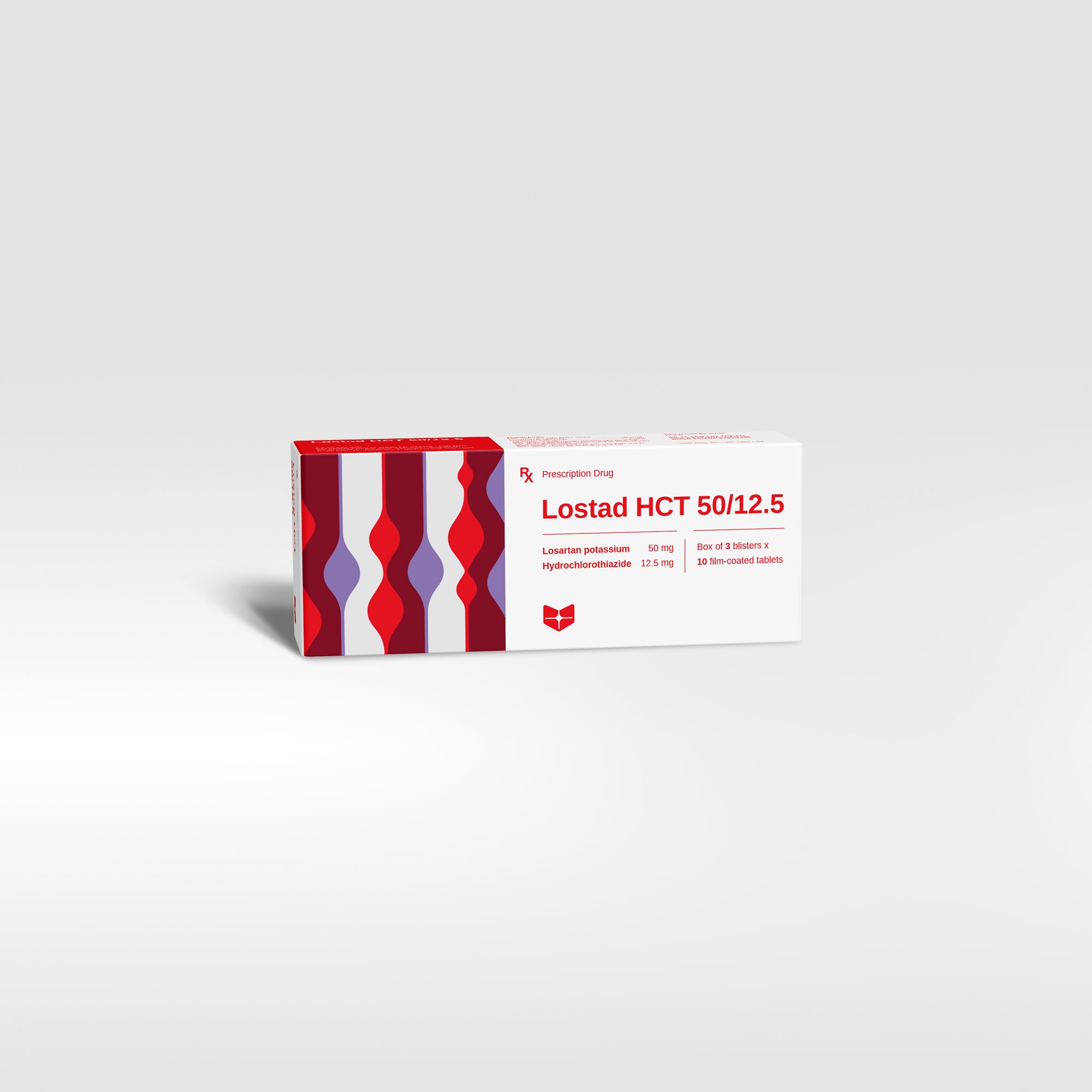Indications
- For the treatment of hypertension, for patients in whom combination therapy is appropriate,
- For reduction in the risk of cardiovascular morbidity and mortality in hypertensive patients with left ventricular hypertrophy.
Dosage
Hypertension
- The usual starting and maintenance dose is one tablet of Lostad HCT 50/12.5 (losartan 50 mg/hydrochlorothiazide 12.5 mg) once daily.
- For patients who do not respond adequately to Lostad HCT 50/12.5, the dosage may be increased to losartan 100 mg and hydrochlorothiazide 25 mg once daily or two tablets of Lostad HCT 50/12.5 once daily. The maximum dose is losartan 100 mg and hydrochlorothiazide 25 mg once daily or two tablets of Lostad HCT 50/12.5 once daily. In general, the antihypertensive effect is attained within three weeks after initiation of therapy.
- Lostad HCT 50/12.5 should not be initiated in patients who are intravascularly volume-depleted (e.g., those treated with high-dose diuretics).
- Lostad HCT 50/12.5 is not recommended for patients with severe renal impairment (creatinine clearance ≤ 30 ml/min) or for patients with hepatic impairment.
- No initial dosage adjustment of Lostad HCT 50/12.5 is necessary for elderly patients. Losartan 100 mg and hydrochlorothiazide 25 mg should not be used as initial therapy in elderly patients.
Reduction in the risk of cardiovascular morbidity and mortality in hypertensive patients with left ventricular hypertrophy.
- The usual starting dose is 50 mg of losartan once daily.
- If goal blood pressure is not reached with losartan 50 mg, therapy should be titrated using a combination of losartan and a low dose of hydrochlorothiazide (12.5 mg) and, if needed, the dose should then be increased to losartan 100 mg/hydrochlorothiazide 12.5 mg once daily.
Usage
Lostad HCT 50/12.5 is administered orally, with or without food, may be administered with other antihypertensive agents.















